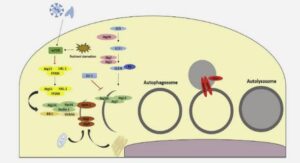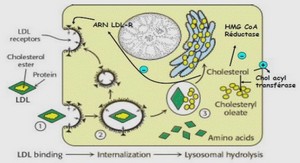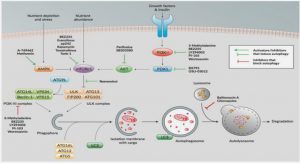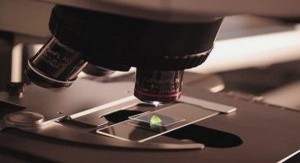Relation between Chemical Composition or Antioxidant Activity
Essential Oils
(EOs) are mainly used for their medicinal properties (Burt 2004; Bakkali and others 2008). Determinations of biological activities have been commonly found with the studies of chemical composition of EOs. Antimicrobial tests carried out for Juniperus phoenicea leaves and berries EOs have been described (Ennajar and others 2009). They showed that J. phoenicea EO strongly inhibited the growth of gram-positive microorganisms and fungi (Mucor ramamnianus), but were inactive against gram-negative strains (Ennajar and others 2009). Cytotoxic activities were also shown for J. phoenicea leaves and berries EOs (El-Sawi and others 2007). Antimicrobial and antibacterial activities were tested for Thymus capitatus EO (Kandil and others 1994; Daferera and others 2003;Bounatirou and others 2007; Amarti and others 2008), for Laurus nobilis EO (Barla and others 2007), for Eucalyptus gracilis EO (Ben Marzoug and others 2010), and for Melaleuca armillaris EO (Hayouni and others 2008). Study on the acetylcholinesterase (AChE) inhibitory capacity of L. nobilis EO from Portugal has been reported (Ferreira and others 2006). The antimalarial and cytotoxic activities of EO of M. armillaris were also evaluated elsewhere (Chabir and others 2011). They have found that the EO had mild activity against the chloroquine-resistant Plasmodium falciparum FcB1 strain (IC50 = 27 mg/L) and a good value has been found concerning cytotoxic activity against MCF7 human breast cancer cells (IC50 = 12 mg/L).
Plant material and distillation methods
Collection of plant material and conditions for isolation of the EOs are described elsewhere: J. phoenicea leaves and berries (Ennajar and others 2009), T. capitatus (Mkaddem and others 2010), and M. armillaris (Chabir and others 2011). Concerning L. nobilis, fresh leaves were collected from region of Mannouba Tunisia in April 2009. Conditions of EO extraction were the same as cited above (Ennajar and others 2009). Concerning E. gracilis, aerial parts were collected from south of Tunisia (Gabes) in March ´ 2007 and conditions of EO extraction were the same as cited above (Ennajar and others 2009).
Chemicals used All chemicals used were of analytical reagent grade. All reagents were purchased from Sigma, Aldrich, Fluka (Saint-Quentin, France). Analytical techniques Gas chromatography. EOs were analyzed using a Varian (Les Ulis, France) Star 3400Cx gas chromatograph equipped with a flame ionization detector (FID) and a DB-5MS capillary column (30 m × 0.25 mm; film thickness, 0.25 μm). Injector and detector temperatures were set at 200 and 270 ◦C, respectively. The oven temperature was gradually raised from 60 to 260 ◦C at 5 ◦C/min, held for 15 min, and finally raised to 340 ◦C at 40 ◦C/min. Helium (purity 99.999%) was the carrier gas, at a flow rate of 1 mL/min. Total analysis time was 57 min. A diluted sample (1 : 100 in petroleum ether, v/v) of 1.0 mL was injected in the split mode (ratio 1 : 10). Quantitative data were obtained electronically from FID area percentage data without the use of correction factors. Peak integration and quantification were performed automatically with Saturn 2100 Workstation software (Varian). The integration of each peak was checked and corrected manually if necessary. Gas chromatography-mass spectrometry. Analysis of EOs was performed under the same conditions as for GC (column, oven temperature, and flow rate of the carrier gas) using the Varian Star 3400 gas chromatograph equipped with a Varian Saturn GC/MS/MS 4D mass-selective detector in the electron impact mode (70 eV). Injector and mass spectrometer transfer line temperatures that were set at 200 and 300 ◦C, respectively. The mass spectrometer was adjusted for an emission current of 10 mA and electron multiplier voltage at 1500 V. The trap temperature was 250 ◦C, and mass scanning was from 40 to 650 atomic mass units (amu).
The components were identified based on the comparison of their Kovats Index (KI) values, coinjection of standards, and MS experimental data with those contained in commercial or literature libraries (NIST 02 version 2.62). Tentative identification of compounds was obtained by comparing experimental MS values with those contained in commercial or literature libraries (NIST02 version 2.62). Alkanes (C5 to C24) were used as reference points in the calculation of KI. GC and GC-MS analysis results are given in Table 1. All determinations were performed in duplicate and averaged.
Antioxidant activity
1,1-Diphenyl-2-picrylhydrazyl (DPPH) radical scavenging assay. Antioxidant scavenging activity was studied using the DPPH free radical as described by Blois (1958) with some modifications. Various dilutions of the test materials (pure antioxidant or EOs) (1.5 mL) were mixed with 1.5 mL of a 0.2 mM methanolic DPPH solution. After an incubation period of 30 min at 25 ◦C, the absorbance at 520 nm, the wavelength of maximum absorbance of DPPH, was recorded as Asample, using a Helios spectrophotometer (Unicam, Cambridge, UK). A blank experiment was also carried out applying the same procedure to a solution without the test material, and the absorbance as recorded as Ablank. The free radical scavenging activity of each solution was then calculated as percentage inhibition according to the following equation: %inhibition = 100 × (Ablank − Asample) Ablank (1) Antioxidant activity of test compounds or extracts was expressed as IC50, defined as the concentration of the test material required to cause a 50% decrease in initial DPPH concentration.
The IC50 was identified using linear regression analyses (least-squares line method with calculation of a correlation coefficient R2 with the range of satisfaction between 0.994 and 0.998). All measurements were performed in triplicate. 2,2 -Azinobis-3-ethylbenzothiazoline-6-sulfonate (ABTS) radical scavenging assay. The radical scavenging capacity of antioxidants for the ABTS radical action was determined as described elsewhere (Re and others 1999). ABTS was generated by mixing 7 mM ABTS at pH 7.4 (5 mM NaH2PO4, 5 mM Na2HPO4, and 154 mM NaCl) with 2.5 mM potassium persulfate (final concentration) followed by storage in the dark at room temperature for 16 h before use. The mixture was diluted with ethanol to give an absorbance of 0.70 to 0.02 units at 734 nm using the Helios spectrophotometer. For each sample, the diluted methanol solution of EO (100 mL) was allowed to react with fresh ABTS solution (900 mL), and then the absorbance was measured 6 min after initial mixing. Ascorbic acid was used as a standard. The capacity of free radical scavenging was expressed by IC50 (mg/L) value, which represents the concentration required to scavenge 50% of ABTS radicals. The capacity of free radical scavenging IC50 was determined using the same equation previously used for the DPPH method. IC50 was identified using linear regression analyses (R2 = 0.992 to 0.999). All measurements were performed in triplicate.





